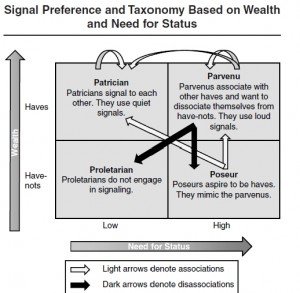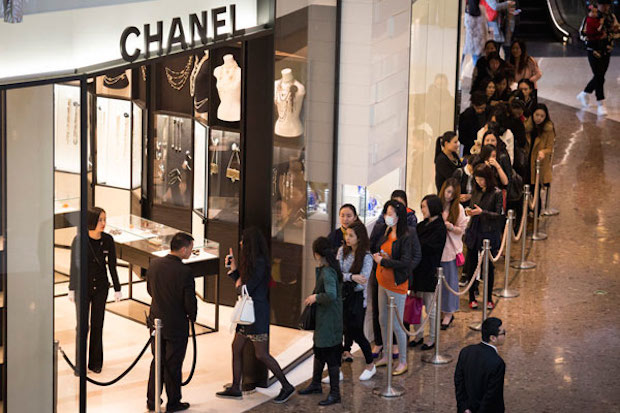In some of my earlier posts, I have stated that there are two simultaneous paradoxical needs among us consumers with regard to consumption namely, (a) to conform and (b) to demonstrate uniqueness. In sociology and psychology this has led to creation of various terms such as fitting in or standing out, in-group vs. out-group behaviour, associative vs. dissociative group behaviour. All these can be of great help in segmenting consumers.
Segmentation as an idea seems to have cropped up from political ideology of ‘divide and rule’ and it still seems to work in most contexts. In this article, I wish to focus on segmenting luxury brand consumers. Recently, I came across an article in Journal of Marketing focusing on status signalling behaviour among consumers. The article is interesting as it looks at how subtle signals can enhance and trigger consumer consumption decisions.
The authors coin four segments of consumers using the famous four P idea of marketing. They segment the luxury consumers into 4 segments namely: patricians, parvenu, poseurs and proletarians.
The definition of each segment is as follows:
1.Patricians are super-rich who pay a premium for inconspicuously branded products. They do not look for explicit signalling but largely focus on subtlety.
2.Parvenus are probably the nouveau rich who have suddenly amassed big futures and are trying show they have arrived. They love explicit signalling.
3.Poseurs are fakers. They buy fake goods to demonstrate their affinity to the above two groups. They would also use explicit signalling.
4.Proletarians are the left outs in socio-economic status. They do not buy luxury goods and do not signal either.
Attached below is the model provided by the authors in their Journal of Marketing Article.
Source: Han, Y. J., J. C. Nunes, and X. Drèze “Signaling Status with Luxury Goods: The Role of Brand Prominence,” Journal of Marketing, 74 (4), 15-30.
While the segmentation looks really interesting, the question which arises is how can managers actually use this in the marketplace?
For example, can a consumer be a patrician and parvenu at the same time? For example, what if the consumer is actually using a Hermis Berkin (discreet signalling) bag with Christian Laboutin shoes (explicit signalling)? Similarly, can a consumer be a patrician and poseur at the same time. For example, a consumer may use a Seville Row tailored suit with a fake Mont Blanc. What need to be understood is that there are no water-tight compartments when segmenting luxury consumers. Certainly, there will be consumers who will belong to only one category however, that segment may not be the largest segment for any luxury brand.
I believe that meaning luxury segmentation will incorporate situation specificity. I have found strong influence of situation on most consumers’ luxury consumption and therefore that pertinent question of “for what occasion do you wish to use this luxury brand for” can be one of the most important questions segmenting luxury consumers. What do you think?








